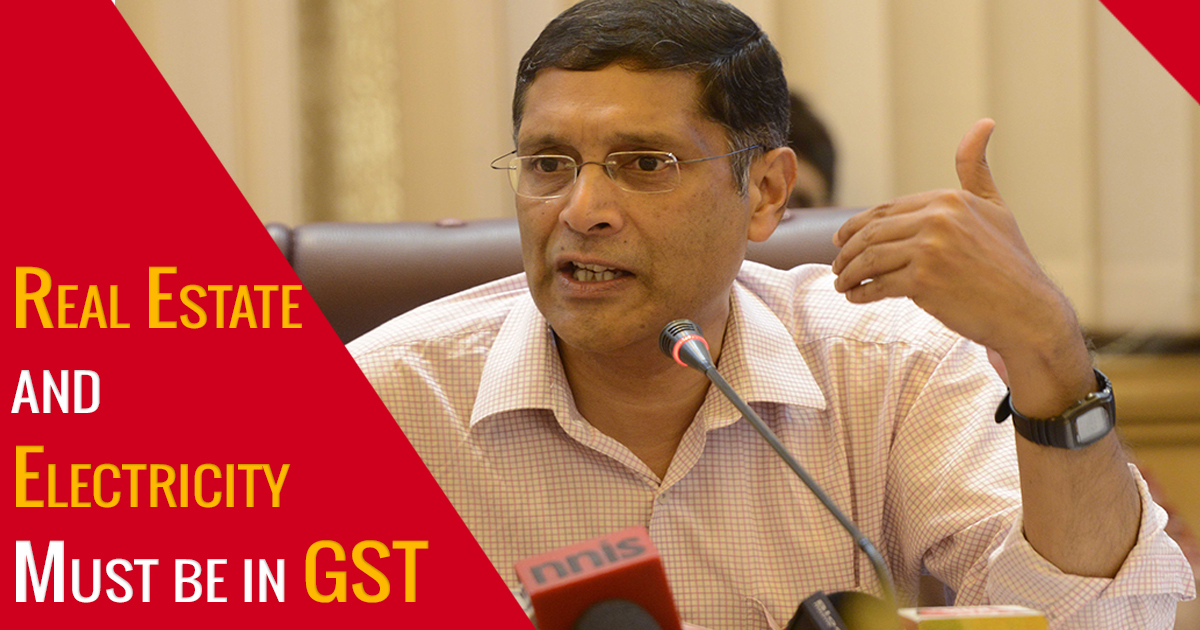As the Modi government initiated its greatest war on black cash yet, chief economic advisor Arvind Subramanian pitched for land and real estate under the GST administration to check tax evasions and black money avoidance.
Subramanian, finance service has provided details regarding conceivable duty rates under the Goods and Services Tax (GST), recommended that the new direct assessment set-up ought to be perfect with straightforward low rates and would incorporate land and property and additionally electricity. GST expects to take off from April 1, 2017, which is to subsume centre taxes, benefits expense and state VAT on manufactured products and services, yet property and power have so far not been discussed as being a piece of it.
He mentioned that, “Stamp duty (on property registration) is separate and states can retain the right to have stamp duty. The sale of land and immovable property should be part of GST so that input tax credit can flow freely in the system, So, it is terribly important that land and real estate being part of the GST, I think they should be part of GST and then the input credit can flow and make power more competitive. So, in terms of GST, clean, simple low rates, land, property part of it, power part of it also, will actually be not just important in itself but as a complement to bigger fight against black money and corruption that we embark on.”
Read Also: Timeline of GST Implementation in India, So Far!
“I think we need to focus on some of the things that need to be brought into GST — real estate, power. I think we should not lose sight of this because this comes at a time when we want to eliminate black money and corruption,” he added.
Subramanian had suggested a three-level rate structure for GST, under which some basic merchandise were to be exhausted at a lower rate of 12 percent thus called negative mark merchandise. Every single good was to be burdened with a standard rate of 17-18 percent and he also had proposed that services be taxed at the standard rate of 17-18 percent.
